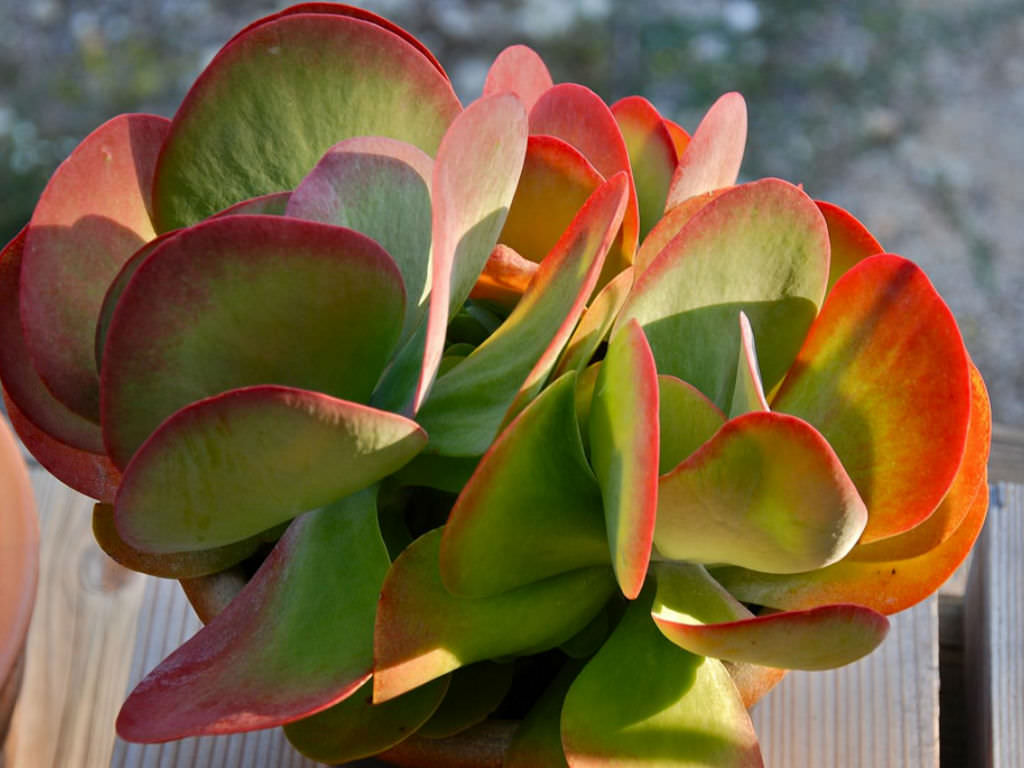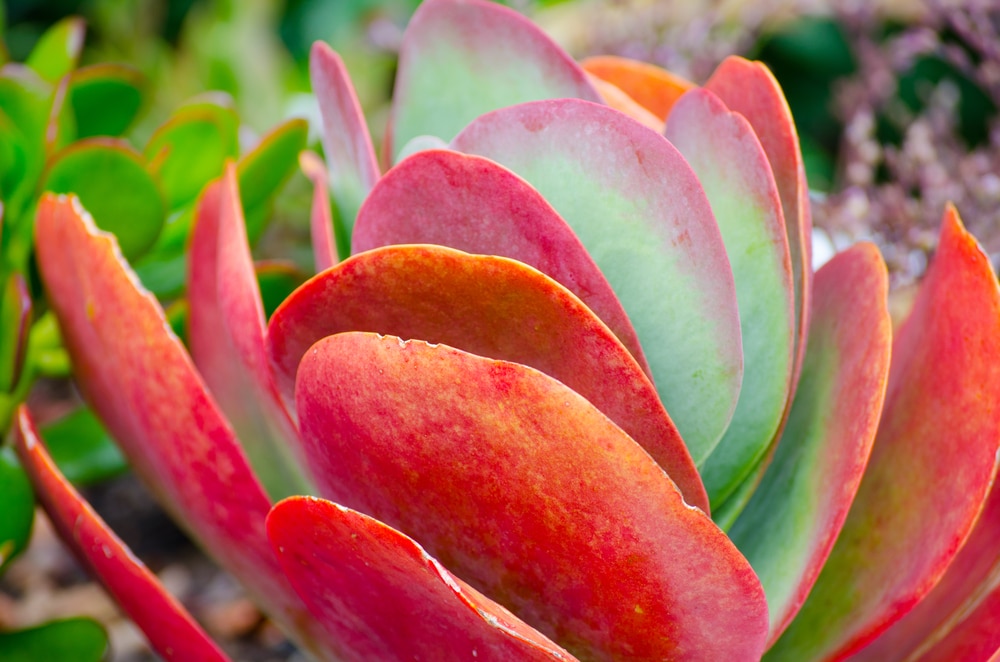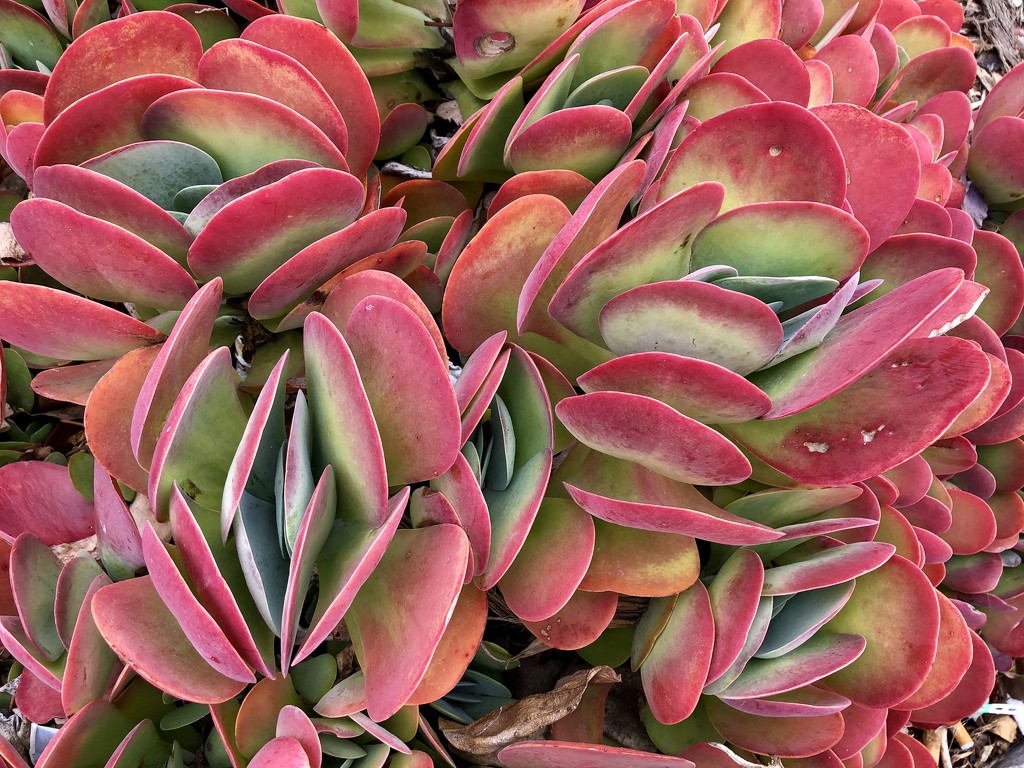The paddle plant, also known by its botanical name of Kalanchoe thyrsiflora, is a popular succulent known for its unique paddle-shaped leaves. Native to the arid regions of Africa, paddle plants thrive indoors and outdoors in warm climates with the right care.
If you recently added a paddle plant to your plant collection or want to learn how to keep one healthy, this growing guide can tell you what need to know. We’ll discuss proper sunlight, ideal temperatures, watering frequency, soil recommendations, fertilization, pruning, propagation, pest control, and more paddle plant care tips.
Sunlight Requirements for Paddle Plants
Paddle plants need plenty of bright, indirect sunlight to maintain their vibrant green colors and paddle-like shapes.
Place paddle plants near an east, west, or slightly shaded south-facing window indoors. Rotate the plant occasionally so all sides receive equal sunlight.
If the leaves start blushing red or reaching toward the light source, it needs more sun.
Ideal Temperatures for Paddle Plant Care
As a succulent native to warm African regions, paddle plants grow best with average room temperatures between 65-80°F (18-27°C).
They can tolerate slightly cooler and warmer temperatures, but extremes can damage leaves or stunt growth.
In zones 10-11, paddle plants thrive outdoors year-round. Elsewhere, they must overwinter indoors above 50°F (10°C).
How Often to Water Paddle Plants
Take care not to overwater paddle plants, as wet soil can lead to root rot. The succulent leaves and stems easily show signs of underwatering too.
Water only when the top few inches become dry. The leaves will be slightly soft and wrinkled when they need water.
In the growing season (spring through summer), you’ll likely water 1-2 times per month. In winter, you may water even less.
Always use containers with bottom drainage holes and fast-draining cactus/succulent soil mixes.
Choosing the Right Planters and Soil
Speaking of drainage and soil, here are some quick tips:
Use terra cotta, plastic, concrete, wood, or other pots with holes. Avoid non-draining containers.
Opt for cactus & succulent soil mixes, or make your own gritty blend with sand, perlite, gravel etc.
You can also plant paddle plants directly in garden beds with sandy, fast-draining soil. Add compost at planting to boost nutrients.
Fertilizing Paddle Plants
While paddle plants grow well in nutrient-poor soil, applying fertilizer once in awhile can encourage faster growth and blooms:
Fertilize monthly in the spring and summer with a balanced liquid succulent fertilizer diluted to half-strength.
Let the plant rest in the fall and winter months without any fertilizer.
If desired, you can use a controlled-release fertilizer spike near the roots in early spring.
Always flush the soil with water after applying fertilizer to avoid chemical leaf burn.
See also : What does potassium do for plants
Pruning Paddle Plant Leaves and Stems
Trim leggy growth and damaged leaves to keep your paddle plant compact and tidy:
Use sterilized pruning shears/scissors to prevent infections. Make cuts at 45° angles right above leaf nodes.
Prune back overgrown stems in early spring to reshape. New branches will sprout below cuts.
Carefully pinch or twist off drying leaves near the base throughout the year. Don’t yank healthy leaves.
Remove spent flower stalks after blooming to encourage more buds.
Propagating Paddle Plants From Cuttings
Once established, paddle plants are easy and fun to propagate! Propagation creates genetic clones or backups.
In spring and summer, cut a leaf near its base. Allow the cut end to callous for 1-2 days.
Stick the leaf upright in a container with drainage holes, filled with well-draining soil.
New roots and rosettes emerge in a few weeks. Gradually acclimate plants to outdoor sun over 7-10 days before transplanting.
You can also propagate paddle plants from stem cuttings. Just cut sections of bare stem and root them the same way.
Common Paddle Plant Pests and Solutions
When cared for properly, paddle plants rarely struggle with pests or diseases. But watch for these few potential problems:
Mealybugs – Cottony insects that leave sticky residues on plants. Wipe away with isopropyl alcohol.
Fungus gnats – Harmless but annoying small black flies from overwatering. Allow soil to fully dry out to eliminate breeding grounds.
Leaf spots – Brown spots on paddle leaves signaling fungal or bacterial issues. Prune affected leaves. Improve airflow and water less.
Catch issues early before they spread! Also periodically check for spider mites, though they usually avoid succulents.
Conclusion
With paddle-shaped fleshy blue-green leaves unlike any other, the paddle plant makes a fabulous low-maintenance houseplant. Place your paddles in bright locations, water sparingly, and prune lightly for health and beauty.



